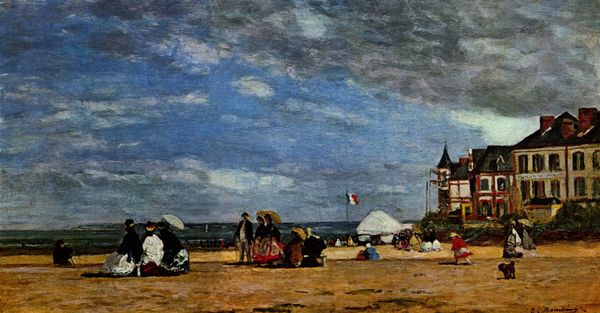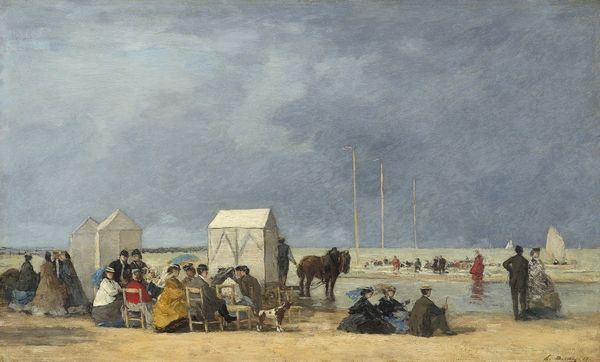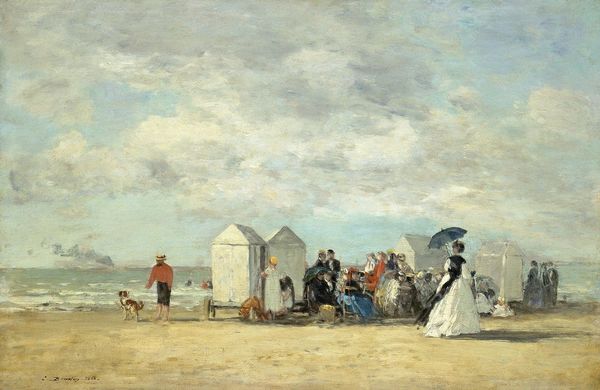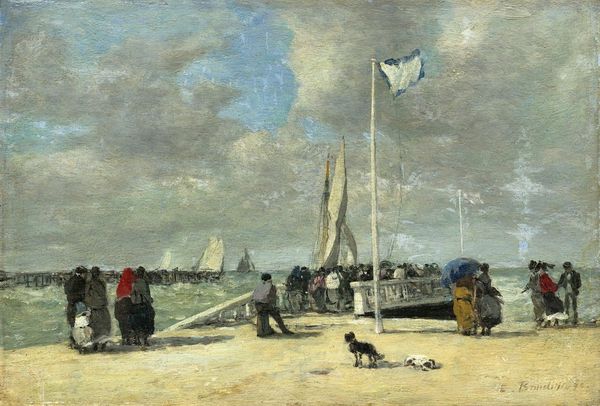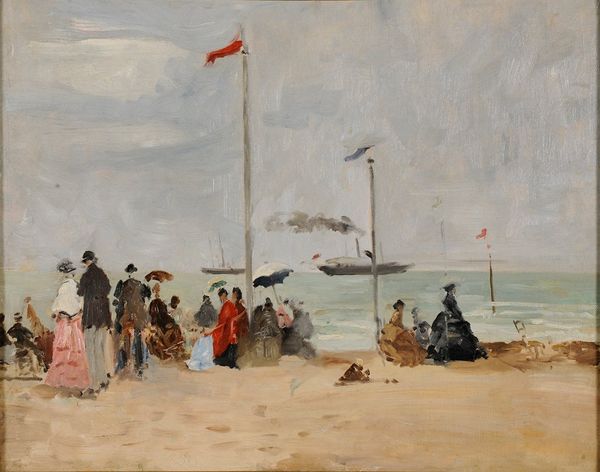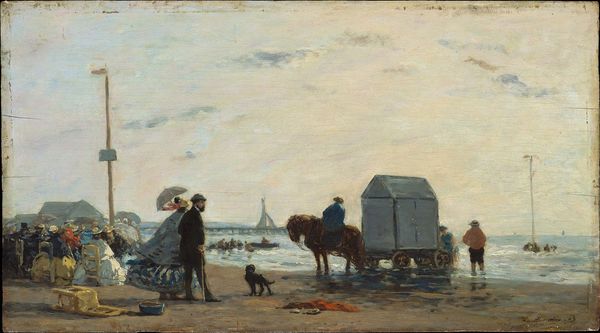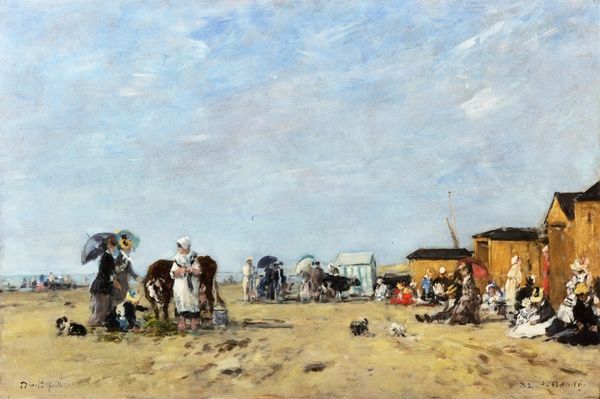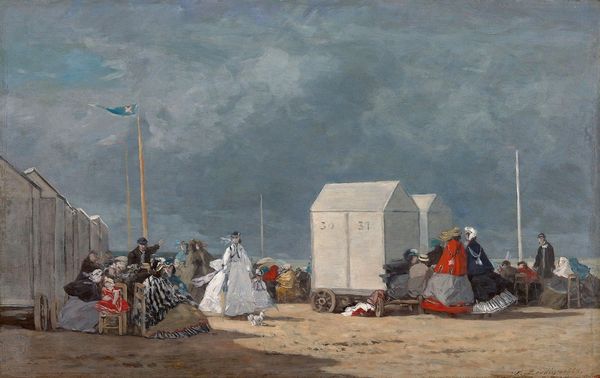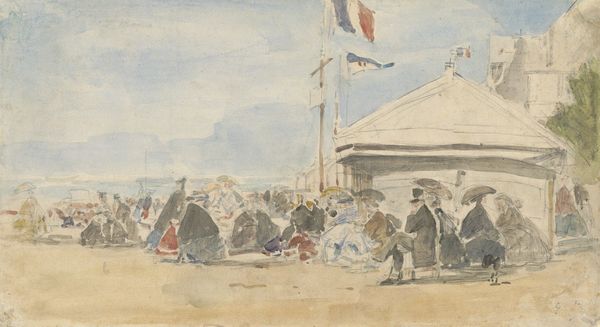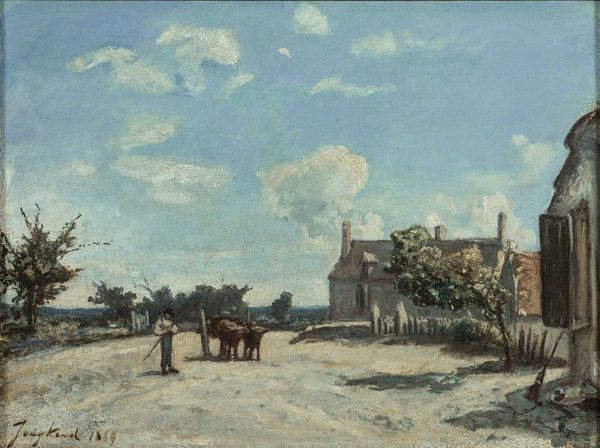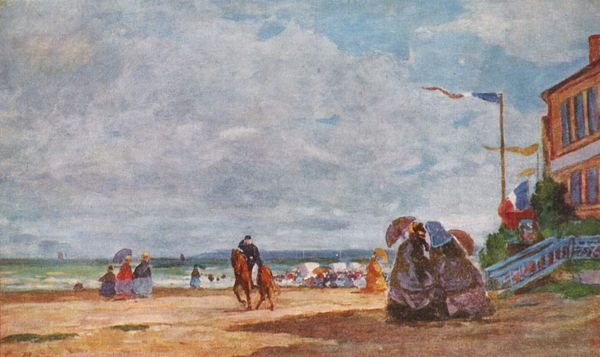
Copyright: Public Domain: Artvee
Curator: Eugène Boudin’s "La plage de Trouville," painted in 1863, offers us a glimpse into leisure and social life in 19th-century France. Editor: It's bright, airy. The scene seems dominated by the people, yet somehow the architecture pushes forward—almost aggressively—to grab attention. I wonder, what statement are the buildings making given they take up so much canvas? Curator: The development of Trouville as a fashionable resort town certainly impacted its visual representation, like this one. The architecture, especially the hotels, became emblems of its appeal, promising a certain status to its visitors. Boudin's decision to include these features points towards the shifting social dynamics as leisure became increasingly commodified and accessible. Editor: Interesting how the high-end hotels frame the figures in the lower register. But beyond the socio-economics on display here, the execution interests me too. Look at the brushwork, particularly in the sky. The texture! I'm immediately thinking of the materiality of the oil paint itself—how he’s almost sculpting clouds rather than simply painting them. Curator: Boudin's commitment to *en plein air* painting was groundbreaking. Capturing the fleeting effects of light and atmosphere required a new approach to technique, one that would directly influence the Impressionists. Editor: Exactly. It's like he’s documenting a moment but doing so in a way that showcases the very act of *making*. What did accessing painting supplies look like in Trouville at this time? I want to know more about the manufacturing and distribution behind works like these. Curator: We can also view it through the lens of emerging tourism and its visual culture. Boudin found success by catering to a burgeoning market of art consumers eager to possess images of their vacation experiences. It demonstrates art’s integration into commerce and social stratification during this period. Editor: It’s this tension between depicting a leisure class scene and pushing the boundaries of painting itself that captivates. Thank you for untangling some of the intricacies for us! Curator: It's precisely these connections between the artistic process and the social context that make the work so rich and evocative.
Comments
No comments
Be the first to comment and join the conversation on the ultimate creative platform.
